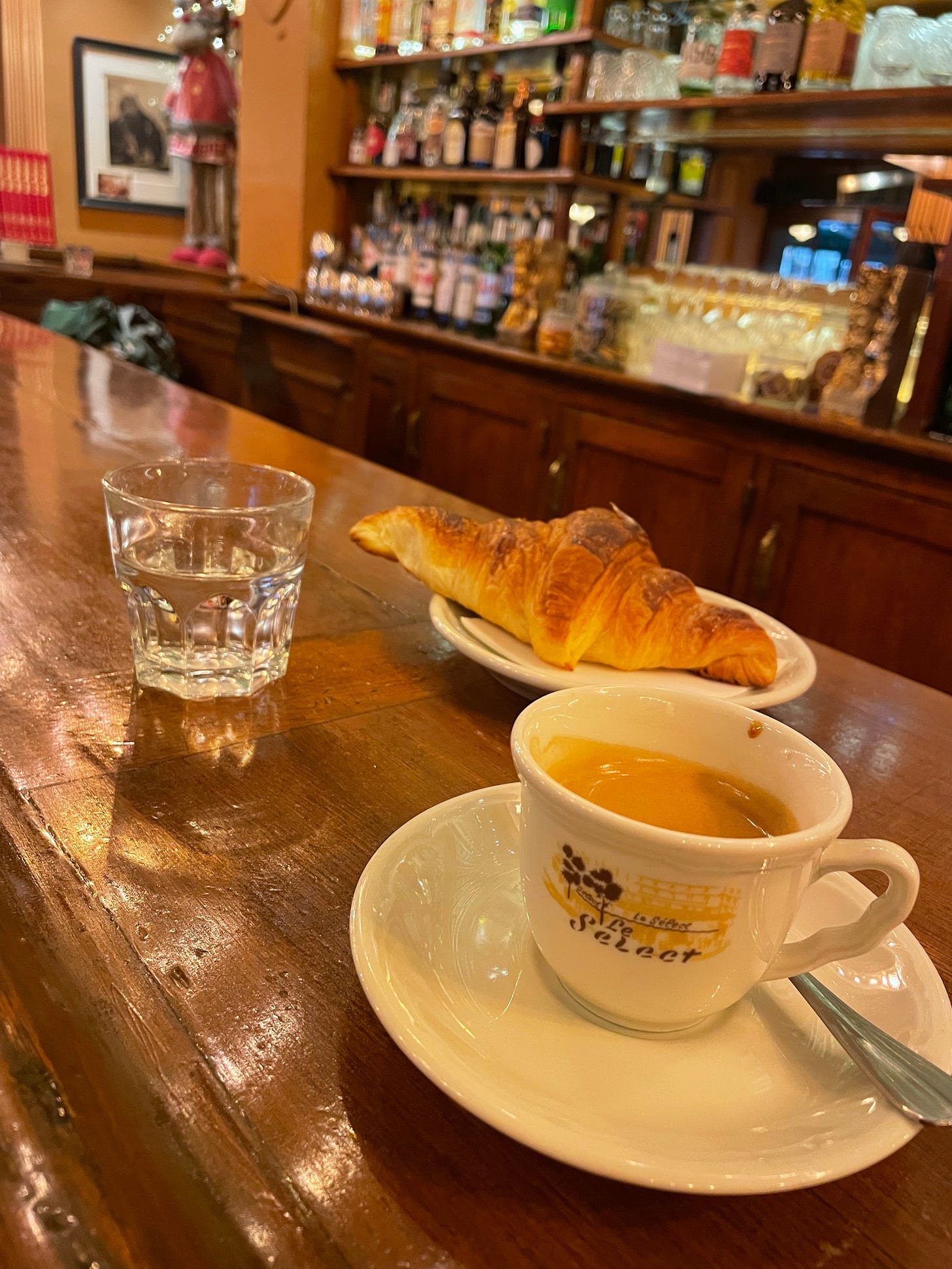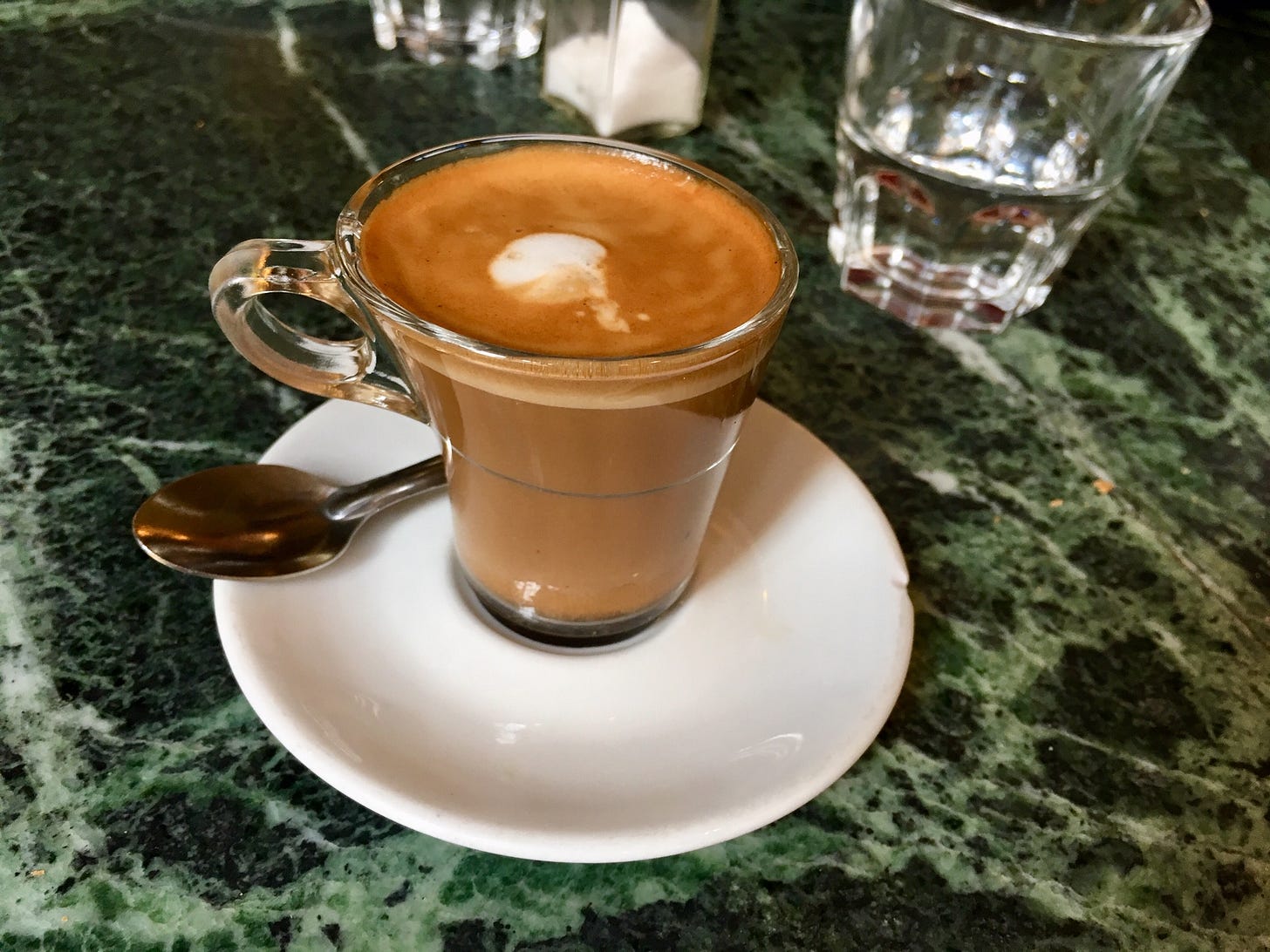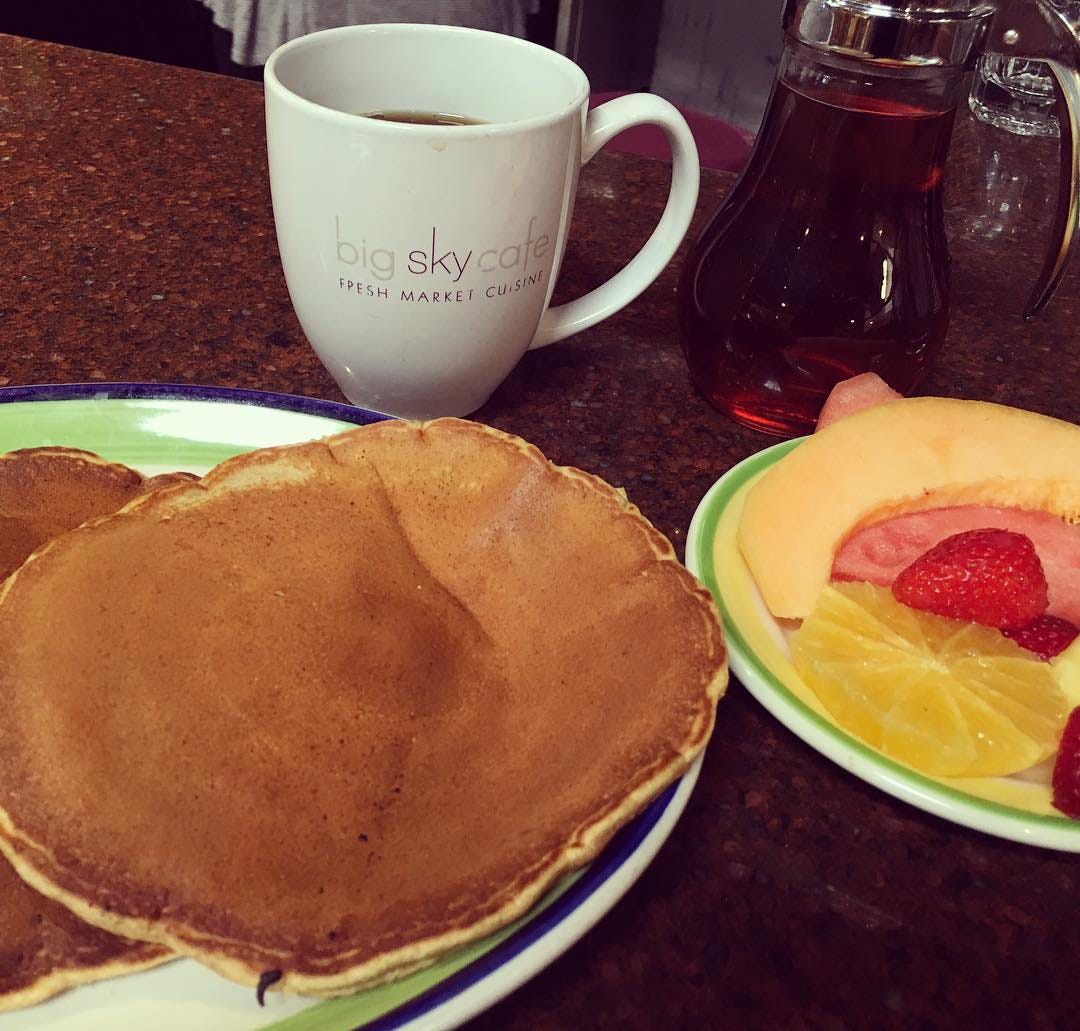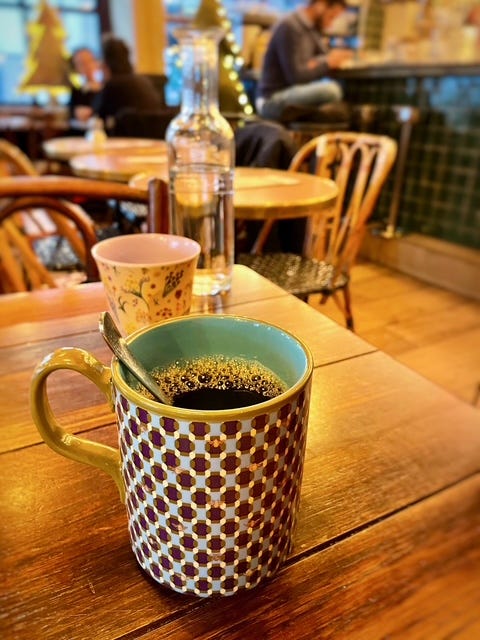"Le Petit Déjeuner," the French breakfast (and my new favorite breakfast place in Paris!)
Do the French go for a simple affair or a Breakfast of Champions? Both, as it turns out, depending on the day of the week.
Note: Most of my publications are free so everyone may enjoy them. Now and then I wrap a small gift to thank paid Substack subscribers for their support. There’s one at the end of this story.
Bonjour, c’est Véro
The French breakfast: a small and sweet affair
I like to eat (and talk about food) like the next French native.
It is estimated 8 out of 10 of my countrymen have breakfast daily, and over 90% enjoy it at home.
My favorite meal of the day is le petit déjeuner (often abbreviated “le p’tit déj’.) It is the ritual that helps launch my day.
Chez moi, le petit déj’ is when plans are made and when I take a deep breath before life becomes too hectic.
A peaceful time (I insist on it) at home or on the road.
There are two main reactions to the French breakfast when foreign visitors experience it for the first time: 1. They partake enthusiastically and dig into the viennoiseries basket (croissant, pain au chocolat, chocolatine, pain au raisins.) 2. They complain there are too many carbs, no enough hot food, eggs or meat.
“Etes-vous sucré ou salé?”
If you have a sweet tooth (sucré) you will love the French breakfast. If you prefer hearty, savory (salé) or hot dishes, you might not.
The undisputed star of the petit déjeuner (referred to as a “continental breakfast” in many hotels around the world) is la baguette, the one item that reconciles the sucré and salé teams.
Other types of artisan breads do nicely too. My favorites. I never buy a baguette. Et oui. Now you can tell your friends not *all* French women walk around holding une baguette and bite off le crouton!
The French like to slather copious amounts of butter and jam on the bread (honey is a substitute.) Many trempent (dunk) the bread into the hot beverage that comes with the continental breakfast, café, café au lait (they only drink café au lait at home but it is shows up now and then in cafés catering to tourists) thé, chocolat chaud.
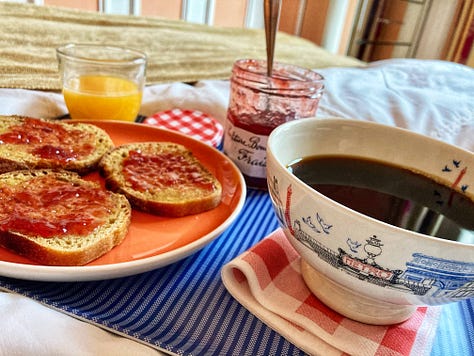
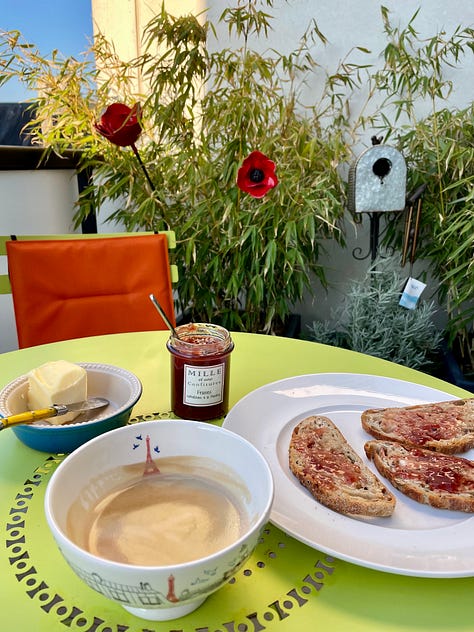
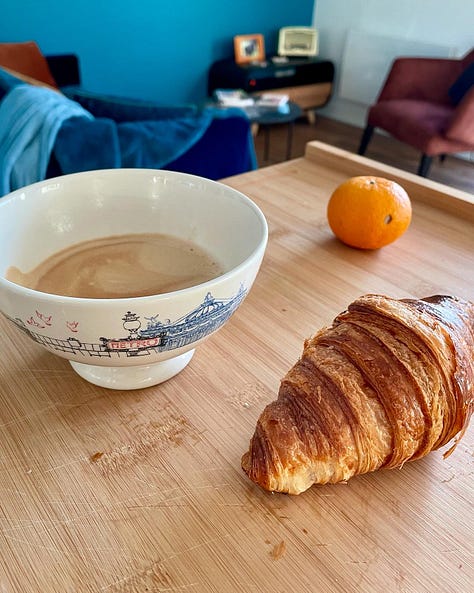
Some people get turned off by dunking (“What about crumbs floating around the cup?”) Fun fact: As early as the Renaissance (16th century) people dunked buttered bread into milk. Why change a good thing?
Let’s recap: We have baguette, some viennoiseries (at the very least un croissant,) a hot beverage, often a cold one as well (orange or apple juice a popular choice.)
In some homes (and hotels) there might be fresh fruit, apple sauce and yogurt or fromage blanc (which is hard to find outside France and is neither crème fraîche, sour cream or yogurt.)
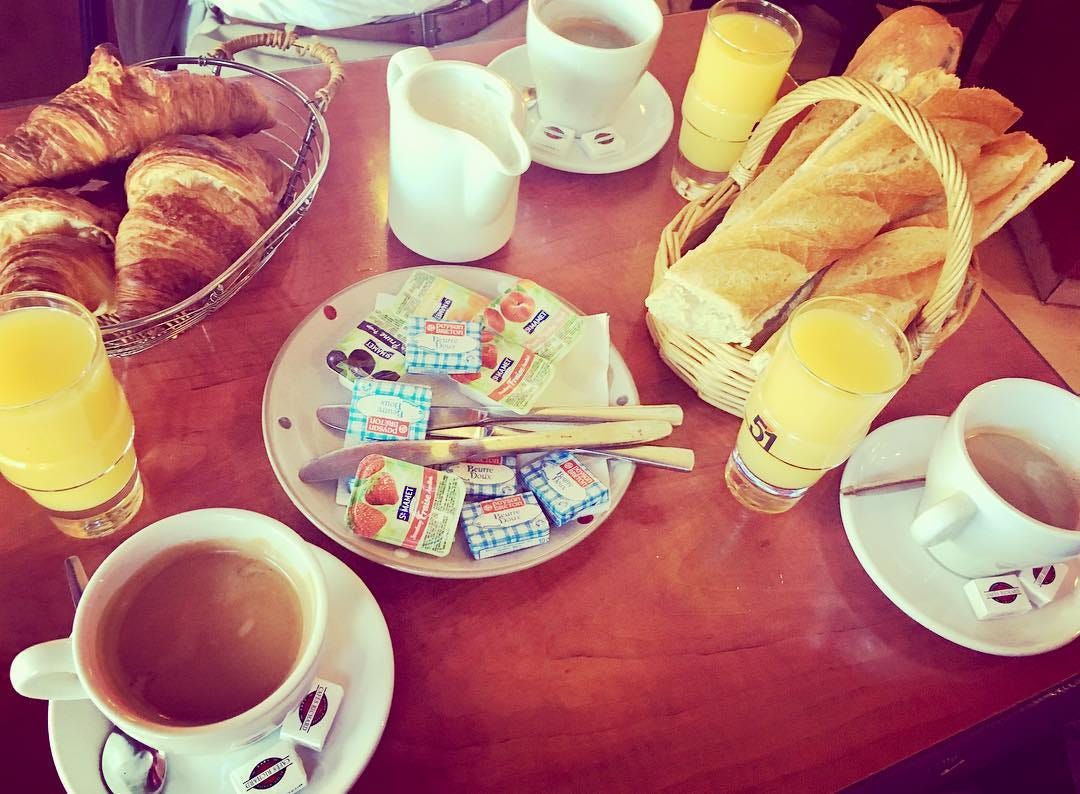
Encore du sucré (more sugar.)
The younger crowds have adopted cereal. In recent years cereal aisles at large French supermarkets have looked like the younger cousins of their North American counterparts.
These days it’s not unusual to see chocolate-hazelnut spread (Nutella or one of its competitors) replacing jam on baguette slices.
In short le petit déjeuner is not elaborate or balanced. It would be fair to say it is, to some, the least important meal of the day but a necessary step.
This Gallic diet may result in loss of energy (and a sugar crash) mid-morning. Hence the ritual “pause café” (coffee break) around 10:00am. It’s not that the French don’t like working. They just need to refuel by the coffee machine. It can get crowded there.
I work from home and can’t catch up with colleagues mid-morning over coffee but don’t mind taking a short break nearby to sip on a (café) noisette (espresso with a dash of milk) preferably en terrasse or au zinc (standing at the bar, so I may chat with the staff member manning it.)
The times They Are A-Changin’: Le Brunch and other novelties
The French may prefer a small breakfast, yet brunch (breakfast on steroids) has become a big deal in the last 10-15 years.
In Paris and other cities cafés and restaurants offering a “Formule Brunch” (prix fixe menu) get sold out every Sunday. My countrymen don’t seem to think twice before investing 25 to 35 Euros into a multi-course meal offering the basics of a traditional American breakfast (involving eggs) or more creative dishes in line with the times (avocado toast, anyone?)
Think about it: Diners can have the best of both worlds, le sucré *and* le salé and SO MUCH food!
Besides "Le Brunch, c’est très Brooklyn !”
Brunch is prime social time best enjoyed with friends and is prevalent among urbanites around the country.
Is it in the process of replacing the traditional French Sunday lunch once shared by several generations of the family?
On weekdays at least the French may not be quite ready to give up the petit déj’ Made in France: The French government have stepped in to ensure all kids start their school day on a full stomach while fighting social inequalities and helping train children’s palates at an early age.
Since 2019 programs financed by the State and local authorities have offered free “petits déjeuners à l’école” and the trend is spreading across Metropolitan France.
Liberté, Egalité, Fraternité, Petit Déjeuner.
My idea of a great breakfast place
There are mornings when you need a French-style breakfast.
There are mornings when you crave more substantial food even on a week day.
Maybe it’s cold outside. Maybe you are a little tired of the predictable baguette beurrée-croissant-café combo. Maybe you know you’ll be too busy to have a sit-down lunch later and you need to fuel up in anticipation of the 20,000 steps you’ll be clocking up on the city’s sidewalks.
In Paris’ touristy neighborhoods there’s plenty to choose from whether you are “team sucrée” or “team salée.”
In popular arrondissements eateries get crowded (especially on the weekends) as tourists and locals fight for their (Gatti) rattan chair and a diminutive bistro table.
If I want continental-style breakfast fare I’ll head for a hole-in-the-wall where I am more likely to soak up local vibes. If I get nostalgic of my North American years, I may find a breakfast spot in vogue (not a hard thing to do in the increasingly gentrified Paris Boboland.)
Le cadre (the environment) is important too: cozy vibes in the winter, a fun terrasse in summer months. Staff must be friendly, attentive— yet discreet. This is France after all. No need for constant interruptions.
Last month during the week after Christmas I found myself in a trendy Parisian arrondissement (the 2nd) and skipped the overpriced, industrial hotel breakfast (trust professional tour guides to spot those,) eating out every morning while my son, 25, was still in bed recovering from his late-night adventures with local college friends.
I returned to a restaurant I had tried in the past at dinner time, a few steps away from popular rue Montorgueil. Little did I know it would become my new favorite Parisian breakfast Q.G. (Quartier Général, HQ.)
Join me inside?
Keep reading with a 7-day free trial
Subscribe to France with Vero "Lettres de France" to keep reading this post and get 7 days of free access to the full post archives.




